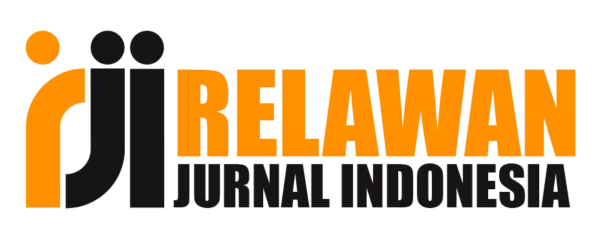PERSEPSI PENGUNJUNG TERHADAP KENYAMANAN INTERAKSI SOSIAL PADA RUANG TERBUKA PUBLIK (STUDI KASUS LAPANGAN KAREBOSI MAKASSAR)
Abstract
Public space has an important role to increase physical health and social interaction of city communities. Karebosi field is a public space that is in the development priority by Makassar city government. Karebosi field is the most ideal facility to represent the concept of an open public space in Makassar. After going through revitalization process, the government still continues to reform and refine the Karebosi field functions. This research aims to find out the visitors' perception towards the comfort of social interaction in the Karebosi field, and what factors which are influence them as well. This research was conducted in 2018 at Karebosi field, Makassar. The method used in this research is mixed method (qualitative-quantitative). The technique of data collection is done by evidentiary method through data triangulation (observation, questionnaire, and interview). The result of this research can be concluded that the facility in Karebosi field is quite successful in attracting the visitors to do sport activities in public space, yet the level of success is still not optimal because it is still in the range of 60.89%, which is due to the facility development that has not been varied, the facilities are considered as not being able to stimulate the diversity of social interaction and increasing the number in public space. Designing, Karebosi field is not able to give an impression and meaning for the people who do the activities in it. It is expected to be a reference for Makassar government in formulating the steps to increase the service quality and the functions of the Karebosi field in the future.
Ruang publik berperan penting dalam meningkatkan kesehatan fisik dan interaksi sosial penduduk perkotaan. Lapangan Karebosi merupakan salah satu ruang terbuka publik yang menjadi prioritas pengembangan tata ruang kota di Makassar. Lapangan Karebosi merupakan ruang publik yang dinilai tepat untuk menampilkan citra ruang terbuka publik di Makassar. Pasca renovasi, pemerintah terus berupaya membenahi dan menyempurnakan fasilitas Lapangan Karebosi. Tujuan dari penelitian ini untuk mengetahui respon pengunjung terhadap kenyamanan interaksi sosial di lapangan Karebosi, dan faktor-faktor apa saja yang mempengaruhinya. Survei ini dilakukan pada tahun 2018 di Lapangan Karebosi, Makassar. Metode yang digunakan dalam penelitian ini adalah metode gabungan (kualitatifkuantitatif). Metode pengumpulan data dilakukan melalui triangulasi data (observasi, kuesioner dan wawancara). Dari hasil penelitian dapat disimpulkan bahwa fasilitas yang ada di lapangan Karebosi berhasil dalam menarik minat pengunjung untuk berolahraga di ruang publik, namun kinerjanya sebagai ruang publik dinilai belum optimal karena masih berada pada angka 60,89. %, Hal ini akibat pengembangan fasilitas yang bersifat monoton. Lapangan Karebosi dinilai gagal menciptakan suasana interaksi sosial yang berkesan dan bermakna bagi masyarakat yang beraktifitas di dalamnya. Hal ini diharapkan dapat menjadi acuan bagi pemerintah kota Makassar dalam merencanakan dan meningkatkan kualitas pelayanan Lapangan Karebosi di masa yang akan datang
Keywords
Full Text:
PDFReferences
Karen Malone in children, Youth, and
sustainable Cities, Local Environment vol. 6
No. 1(2001).
Sauter, .D. Huettenmoser, M.2008. liveable
Street and Social in´clusion-urban Design.
International Volume 13.
Carr, et. all dalam Carmona (2003) . Publik
Place-Urban Spaces, The Dimension of
Design. Burlington : Arcitektural Press.
Parkinson, John. (2012). Democracy and
publik space. Oxford University Press.
Sirvani, Hamid (1985). The Urban Design
process. Van Nostrand Reinhold: New
York.
Rustam Hakim, Hardi Utomo, Component of
landscape architecture design [in Bahasa]
(Jakarta,2003), hal 50.
Weisman, J, 1981. Modeling Environment
Behavior Sistem. Journal Of Man
Envirronment Relatition Persilvania. USA.
Sauter, .D. Huettenmoser, M.2008. liveable
Street and Social in´clusion-urban Design.
International Volume 13.
SC Ruton, Roger, 1984. Publik Space and The
classical Vernacular.Singapore: The Publik.
White, F, William, 1987. The American
Sociologist Vol .14. No.1(Feb, 1978), PP.
S6-66. New York State School Of Industrial
and Relations.
Mehta. 2007. A toolkit for performance
measures of publik space. 43rd ISOCARP
Congress 2007.
Carr, Stephen et al. 1992. Publik space,new
York: Cambridge university.
Sirvani, Hamid (1985). The Urban Design
process. Van Nostrand Reinhold: New
York.
Sudibyo (dalam jonathan,2010) The
Phenomenon of temporary publik sapace of
juanda street Depok
DOI: https://doi.org/10.37905/jjoa.v6i1.28088
Refbacks
- There are currently no refbacks.
Copyright (c) 2024 andi muhammad ichsan, Wahyudi Hasfi, Afifah Harisah, Abdul Mufti Radja

This work is licensed under a Creative Commons Attribution-ShareAlike 4.0 International License.
ISSN CETAK: 2654-5896

This work is licensed under a Creative Commons Attribution-ShareAlike 4.0 International License.





